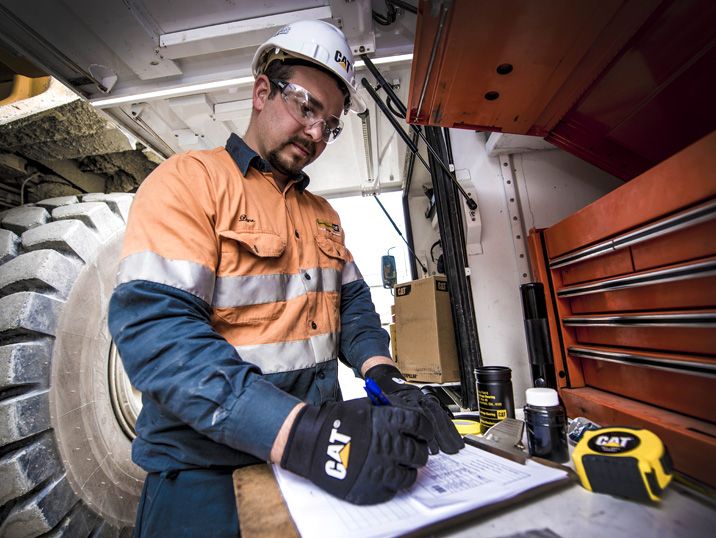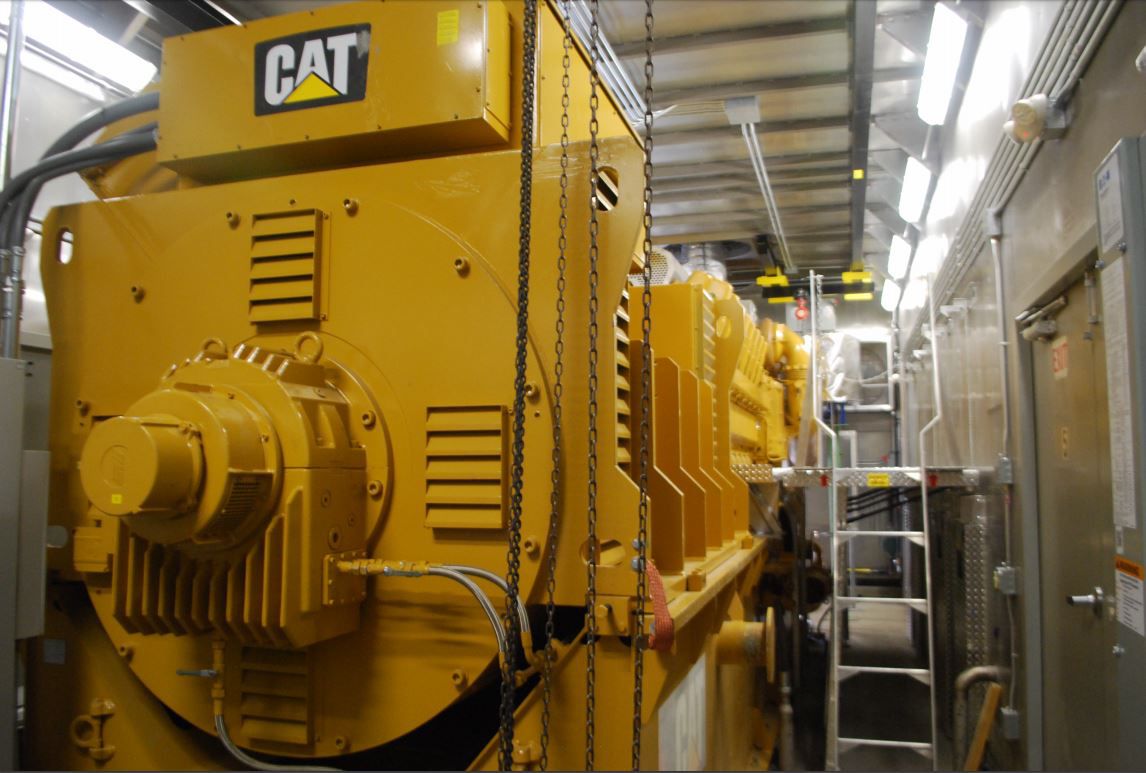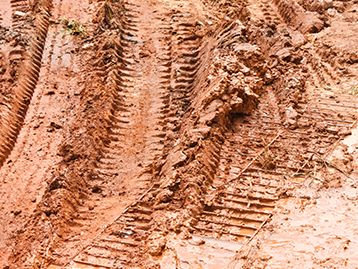

Sign In
Welcome! Sign In to personalize your Cat.com experience
If you already have an existing account with another Cat App, you can use the same account to sign in here
Register Now
One Account. All of Cat.
Your Caterpillar account is the single account you use to log in to select services and applications we offer. Shop for parts and machines online, manage your fleet, go mobile, and more.
Account Information
Site Settings
Security
Some construction professionals may believe cash and credit provide different means to the same end: buying equipment, machinery and other assets for a company, as well as addressing additional expenses. It's important that business owners understand the similarities and differences of these two financial assets and the potential benefits and drawbacks of each.
This knowledge is especially vital when making major purchasing decisions, like a new piece of heavy equipment. Let's look at how cash and credit compare:
Using cash to fund heavy equipment and machinery purchases
The most immediate benefit of using your cash reserves to purchase equipment and machinery is the simplicity of the transaction. Your business pays the equipment dealer and you receive the equipment. There's no lease or loan for your organization to enter into, and the new purchase is owned outright.
Of course, cash has some limitations that must be noted. It's a much more finite resource than credit. Very healthy businesses with strong revenue and profit statements can easily encounter occasional periods of time where available cash is limited. Companies that only use cash limit their ability to purchase major resources when they're needed, sometimes significantly.
Solely using cash can conflict with proactive planning of future purchases. This is one of the major ways to avoid delays and out-of-service equipment, which can disrupt operations and have a negative impact on revenue in terms of both consistency and volume. Relying solely on cash also makes it harder to take advantage of potential expansion. If a chance to grow operations presents itself and requires more equipment to be successful, a lack of cash on hand means a slower response time and the potential to completely miss out on the opportunity.
Using cash in this way means avoiding credit for the same purpose, and that reliance only on existing resources - despite the concerns previously outlined - can create a powerful peace of mind. While that attitude is understandable, it doesn't give enough consideration to the many positives and very few negatives of using credit in a responsible and organized manner.
What makes credit a good choice for major acquisitions?
Credit frequently involves some more requirements up front. Compared to situations where businesses have the necessary cash on hand, applying for a line of credit takes a longer amount of time. It also requires more work on the part of the company in terms of sharing financial statements and getting approval. Credit also involves interest payments, and frequently a down payment, as well. These additional factors involved in using credit mean it's not automatically the right choice for an organization looking to make a large purchase.
However, credit offers a number of advantages. For companies with solid financial standing, it's rarely an issue to secure credit for a large purchase. When working with a captive finance company, those advantages expand. Businesses can work with a provider that's intimately familiar with their industry and cooperatively select terms and conditions that meet the unique needs of the business. With a number of variables involved in securing financing for equipment, a captive finance company frequently gives businesses seeking credit the most agreeable terms.
Using credit creates more flexibility for organizations as well, expanding purchasing power by creating a complement to cash on hand. Many companies like to limit the use of cash to specific areas of operation, like payroll, rent and similar considerations.
A line of credit allows businesses to maintain the financial needs tied to those critical aspects of operation while leveraging the credit to make major purchases and create or maintain the capacity to make new purchases. Cash can instead be used to make the monthly payments associated with the line of credit and keep interest payments to a minimum.
Having either fixed or revolving credit at the business's disposal allows for more overall flexibility, a chance to readily respond to opportunities for growth and to proactively improve machinery and equipment.
To learn more about options for making major equipment and purchases, visit Cat Financial.
Sources:
Additional Articles
Find in-depth articles to answer your questions about construction equipment financing, and expert tips to help you navigate today's economy as a successful business.
-
Tools for Success: How to develop a balanced scorecard for your company
Maintaining the equipment you acquire through various finance and lease options is vital for getting a consistent return and keeping your business moving forward.
Get Started -
The Immediate and Long-term Value of Captive Finance Companies
Partnering with an experienced captive financing company can provide benefits your construction business needs to excel.
Learn More -
Protecting your small business - 3 reasons to make sure you're covered
The top 3 benefits you receive from an extended protection plan
Learn How -
4 Easy Steps to Break Down Financial Barriers
Consider this four-step process when seeking a route to break down the barriers to your business growth.
Learn More -
Protect Your Livelihood by Protecting Your Equipment
Here are three options for protecting your equipment to prevent unnecessary downtime.
Learn More -
4 Easy Steps to Protect Your Cat Engine or Generator Set
Choosing coverage for your engine or generator set is as easy as following these four steps
Learn More -
6 Helpful Tips When Applying for Commercial Financing
Financing offers a means to overcome certain business hurdles. Consider these six tips when applying for commercial financing.
Learn More -
How to Deal With Financial Hardship in the Construction Industry
External factors can derail your business plans. Consider these three useful tips for dealing with financial hardships.
Learn More -
Comparing Equipment Lease vs. Loan
Lease or Loan? These tips should help you decide which best fits your business needs.
Learn More -
3 Tips for Mining Companies Looking to Generate Cash Flow
With commodity prices squeezing cash flow, mining companies everywhere are seeking ways to control costs.
Learn More -
Legacy planning: Your business after you
Legacy planning is a vital consideration for your business-whether you plan to retire in a few years or a few decades.
Learn More -
Business health: Managing risk to make effective investments into your enterprise
How do you approach business risk? Answering this important question can help you maximize your resources.
Learn More -
Business health: The basics of a profitability review
Conducting a basic profitability review can help you identify opportunities for growth and where to cut spending.
Learn More -
Tools for Success: Building a Strong Bidding Template
Crafting a strong bidding template can help your company secure work and please clients.
Learn More -
Reduce Workplace Accidents with Effective Safety Strategies
Safety should be the number one concern for construction companies of any size, and regardless of location.
Learn More -
Business health: Identifying Priorities That Contribute to Growth
The financial and operational health of your business influences many actions you take as an owner.
Learn More -
The Importance of Having an Effective Construction Safety Culture
A strong, consistent, and proactive safety culture can go a long way toward preventing accidents among employees and reducing the negative outcomes that arise from on-the-job injuries.
Learn More -
Tips For Improving Your Credit Score
Increase the likelihood of getting the equipment financing you want at the terms you need.
Learn More -
4 Benefits of an Effective Business Plan
The strategy behind a well-crafted business plan can contribute to efficiency and growth.
Discover the Benefits -
Managing Cash Flow When the Market Takes a Downturn
A down market can significantly impact an industry by influencing nearly every sector of the overall economy.
Learn More -
The Truth About Renting | Part 2
Renting machinery can help your company take on major tasks more effectively and leads to better bottom-line results.
About Renting -
The Truth About Renting | Part 1
In this article, we will review 5 things you need to think about before you sign your rental agreement.
About Renting -
Tools for Success: Grow Your Business With An Effective Cash Flow Template
Business owners need to pay attention to a variety of metrics, measurements and other pieces of information to stay on top of operations.
Learn More -
Equipment Financing: Answering Questions and Debunking Myths
Learn Your End-Of-Term Options And Unlearn Myths Like ‘You Need Perfect Credit’
Learn More -
How Technology Can Help You Operate Your Business More Efficiently
From multinational companies to a new construction or forestry business just starting out, organizations of all types rely on the ability of digital tools.
Technology Tips -
Bids That Beat the Competition
Get 4 exclusive tips to help you improve your bidding strategy to win construction projects.
See Bidding Strategies -
What the Belt and Road Initiative Means for the Modern Economy
Understanding how new connections can transform local, national and global economies.
About the Initiative -
What will the World Look Like After the Belt and Road Initiative is Complete?
Looking at the Belt and Road Initiatives's impact on global commerce and its historical precedent.
About the Initiative -
Budgeting 101: How to Create a Budget for Your Business
A budget is a key component of building a strong foundation for your business. You can leverage your budget to identify your company's strengths, weaknesses, opportunities, and potential concerns.
Get the Guide -
5 Tips for Analyzing a Balance Sheet
Practical advice to help your business operate more efficiently.
Get the Guide -
Understanding the Importance of the Belt and Road Initiative
Learn how this transformative project could affect the global economy.
About the Initiative -
Grow Your Business with These 4 Tips
A guide to bettering your business this year.
Get the Guide

































